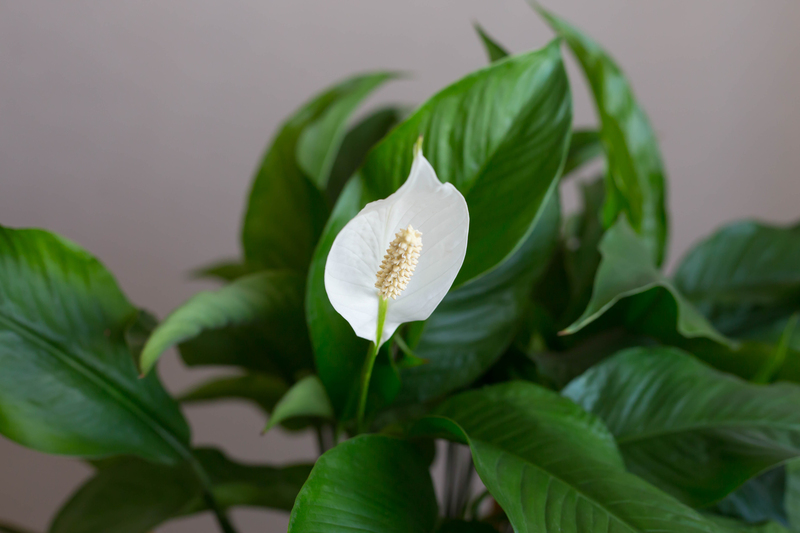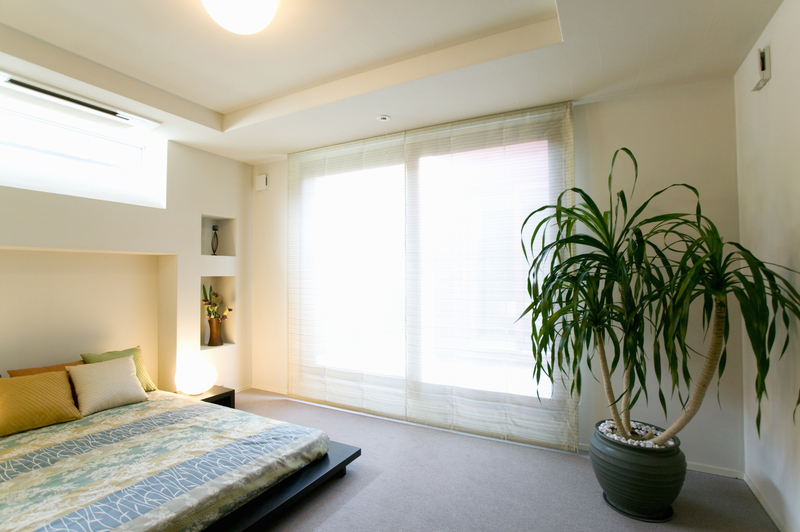How Container Gardening Transforms Urban Spaces
Posted on 07/09/2025
How Container Gardening Transforms Urban Spaces
In the heart of bustling cities, where concrete jungles often replace natural landscapes, container gardening emerges as a beacon of hope. The adaptability and creativity it inspires not only beautify compact spaces but also offer an array of environmental, health, and social benefits. From rooftop oases to compact balconies, learn how container gardening is fundamentally transforming urban spaces--and how you can be part of this green revolution.
What is Container Gardening?
Container gardening is the practice of growing plants exclusively in containers--pots, planters, window boxes, barrels, and other vessels--rather than planting them directly in the ground. Urban container gardening allows individuals with limited or no garden space, such as apartment dwellers, to cultivate a wide variety of plants, including flowers, herbs, vegetables, shrubs, and even trees.
Key Features of Container Gardening
- Portability: Containers can be moved to optimize sunlight, shelter from harsh weather, or simply for aesthetic change.
- Space Efficiency: Ideal for urban environments where outdoor ground space is minimal.
- Versatility: Containers come in various sizes, shapes, and materials, accommodating everything from succulents to large fruit trees.
- Control: Easier to manage soil quality, watering schedules, and pests.

Why Urban Areas Need Container Gardening
Urbanization often leads to a reduction in green spaces, negatively impacting residents' well-being and the environment. Container gardens offer powerful solutions:
- Air Quality Improvement: Plants absorb carbon dioxide and release oxygen, helping to combat urban air pollution.
- Stress Reduction: Natural elements promote relaxation and mental health, counteracting city-induced stress.
- Urban Heat Island Mitigation: Greenery helps cool ambient temperatures by providing shade and through evaporative cooling.
- Biodiversity Enhancement: Even small container gardens attract pollinators and urban wildlife.
The Benefits of Container Gardening in City Environments
1. Maximizing Limited Space
One of the most significant advantages of container gardening in urban settings is the ability to transform any small nook into a lush oasis:
- Balconies and rooftops become productive greenspaces.
- Windowsills turn into miniature herb gardens.
- Cemented patios gain splashes of color and life.
Vertical container gardening, employing stacked pots or wall-mounted planters, enables urban gardeners to make the most of both horizontal and vertical spaces.
2. Flexibility and Mobility
Unlike traditional gardens, container gardens can move with you. Whether tenants change apartments or property managers need clear access, plants grown in containers can be easily relocated, ensuring continuity and flexibility. Seasonal changes? Simply move sensitive plants indoors.
3. Enhanced Control Over Growing Conditions
Container-based urban gardening offers improved control over:
- Soil quality and composition
- Watering and drainage
- Sunlight exposure
- Pest and disease management
This high level of management often leads to healthier plants, higher yields, and an overall more successful gardening experience for beginners and pros alike.
4. Fostering Community and Social Engagement
From rooftop gardens to shared courtyard spaces, container gardening encourages community collaboration. Urban container gardening projects can unite neighbors, foster a collective sense of pride, and offer educational opportunities for all ages. Community gardens using containers democratize access to fresh produce and green space in even the most built-up districts.
5. Encouraging Healthy Lifestyles and Food Security
Growing food in containers empowers city dwellers to harvest fresh, local produce with minimal space and resources. Container-grown vegetables and herbs offer not only nutritional benefits but also increase food sovereignty--a critical consideration in times of economic uncertainty or supply chain disruptions.
Best Plants for Container Gardening in Urban Areas
Selecting the right plants is crucial to the success of any container garden. Fortunately, a wide variety thrive in pots. Here are some ideal choices for city-based container gardeners:
- Herbs: Basil, parsley, chives, mint, rosemary, thyme
- Vegetables: Cherry tomatoes, peppers, lettuce, spinach, radishes
- Flowers: Petunias, marigolds, begonias, pansies, impatiens
- Succulents & Cacti: Perfect for sunny, dry windowsills or terraces
- Edible Fruits: Strawberries, dwarf citrus, blueberries (in acid-loving soil mix)
Opt for compact or dwarf varieties when possible, and don't be afraid to experiment!
Technical Tips for Successful Urban Container Gardens
1. Choose the Right Containers
Material matters: Plastic is lightweight and retains moisture, while clay and terracotta breathe but dry out faster. Self-watering containers are a boon for busy city dwellers.
Ensure containers have drainage holes to prevent root rot.
2. Use Quality Potting Mix
Invest in a high-quality, well-draining potting mix--not just garden soil. Amend with compost or slow-release fertilizer for extra nutrients. Soil health is integral to lush, resilient growth in confined environments.
3. Maximize Sunlight
Most vegetables and flowering plants need at least 6 hours of direct sun daily. Assess your space's light conditions and choose plants accordingly. Moving containers to chase the sun is a major advantage for urban gardeners!
4. Establish a Regular Watering Schedule
Container gardens dry out more quickly than ground-planted beds. During hot weather, daily watering may be necessary. Group thirsty plants together and consider drip irrigation or self-watering systems to reduce maintenance.
5. Feed Your Plants
With limited soil volume, nutrients are quickly depleted. Feed container plants regularly using organic or synthetic fertilizers, following directions carefully to avoid overfeeding.
6. Prune and Rotate
Keep your urban container garden attractive and healthy by deadheading spent blooms, removing diseased leaves, and rotating plant positions for even growth.
Transformative Impacts of Container Gardening on Urban Spaces
1. Greening Concrete Landscapes
Container plants soften harsh urban edges, transforming underutilized terraces, alleys, and entryways into engaging, nature-infused retreats. This visual transformation enhances urban aesthetics, increases property value, and improves overall quality of life.
2. Boosting Mental and Physical Health
Scientific studies consistently show that proximity to greenery reduces anxiety and depression, enhances cognitive function, and even speeds healing. With city living often linked to higher stress, even modest container gardens can make measurable differences in well-being.
3. Promoting Urban Wildlife
Container gardens attract bees, butterflies, and birds, strengthening dwindling city biodiversity. Even a single potted bloom on a windowsill can serve as a vital waystation for pollinators in the concrete expanse.
4. Resilience to Climate Change
Adapting to increasingly erratic weather patterns, urban container gardens bolster community resilience. They help manage stormwater, reduce urban temperatures, sequester carbon, and increase urban dwellers' self-sufficiency.
Innovative Ideas for Urban Container Gardening
- Vertical wall gardens using modular planters on fences or balconies
- Repurposed containers like old buckets, crates, pallets, or even rain boots for a splash of creativity
- Rooftop vegetable plots expanding food production above the city buzz
- Mobile planters on wheels for flexible sun exposure and layout options
- Community garden installations in shared courtyards or on public land
Real-Life Examples: Container Gardens Revitalizing Cities
Cities worldwide embrace container gardening programs to tackle urban challenges:
- New York's High Line: Historic elevated railway transformed with extensive container plantings, now a global model for urban green rejuvenation.
- London's Edible Bus Stops: Roadside bus stations converted with vibrant edible container gardens, bringing free food and color to the city.
- Mumbai's Balcony Gardens: Residents maximize every available ledge and railing, growing food and flowers despite limited space.
These initiatives exemplify the power of container gardening to invigorate city life--from environmental impact to community enrichment.
Common Challenges and Solutions in Urban Container Gardening
- Limited Sunlight: Solution: Choose shade-tolerant species (like ferns or impatiens) or use reflective surfaces to amplify available light.
- Water Restrictions: Solution: Mulch containers, use drought-tolerant plants, and install self-watering systems for efficiency.
- Pests and Disease: Solution: Practice good hygiene, encourage beneficial insects, inspect regularly, and use organic solutions where possible.
- Wind Exposure: Solution: Group containers together and select sturdier, low-growing plants; use barriers for wind-prone sites.
Getting Started: Beginner Steps for Urban Container Gardening
- Assess Your Space: Note sun patterns, wind exposure, and accessible square footage for potential containers.
- Select Suitable Containers: Match your style and available room. Recycle household items for a sustainable touch.
- Pick Plants Thoughtfully: Focus on your needs--do you want kitchen herbs, flowering accents, or leafy greens?
- Prepare Your Potting Mix: Avoid heavy soils; opt for commercial potting mixes and supplement with compost or perlite.
- Maintain Regular Care: Set reminders for watering, feeding, and pruning. Observe your plants and adjust care as needed.

Looking Ahead: The Future of Urban Container Gardening
With continued urban growth, container gardening will play an essential role in reconnecting city dwellers with nature. Advances in technology--like smart planters, app-integrated irrigation systems, and eco-friendly materials--are making it even easier for busy urbanites to participate. From individual efforts on balconies to large-scale public installations, container gardening will remain a key driver in sustainable city development.
Conclusion: Start Your Urban Transformation Today
Container gardening transforms urban spaces by bringing beauty, sustainability, and well-being--even to the smallest nooks of city life. Whether you nurture a single succulent on a windowsill or orchestrate a rooftop vegetable haven, you're contributing to a healthier, greener urban future. Start simply, learn as you grow, and join the movement that's reshaping cities--one container at a time.
Ready to begin? Gather your pots, choose some plants, and let your urban oasis take root!

